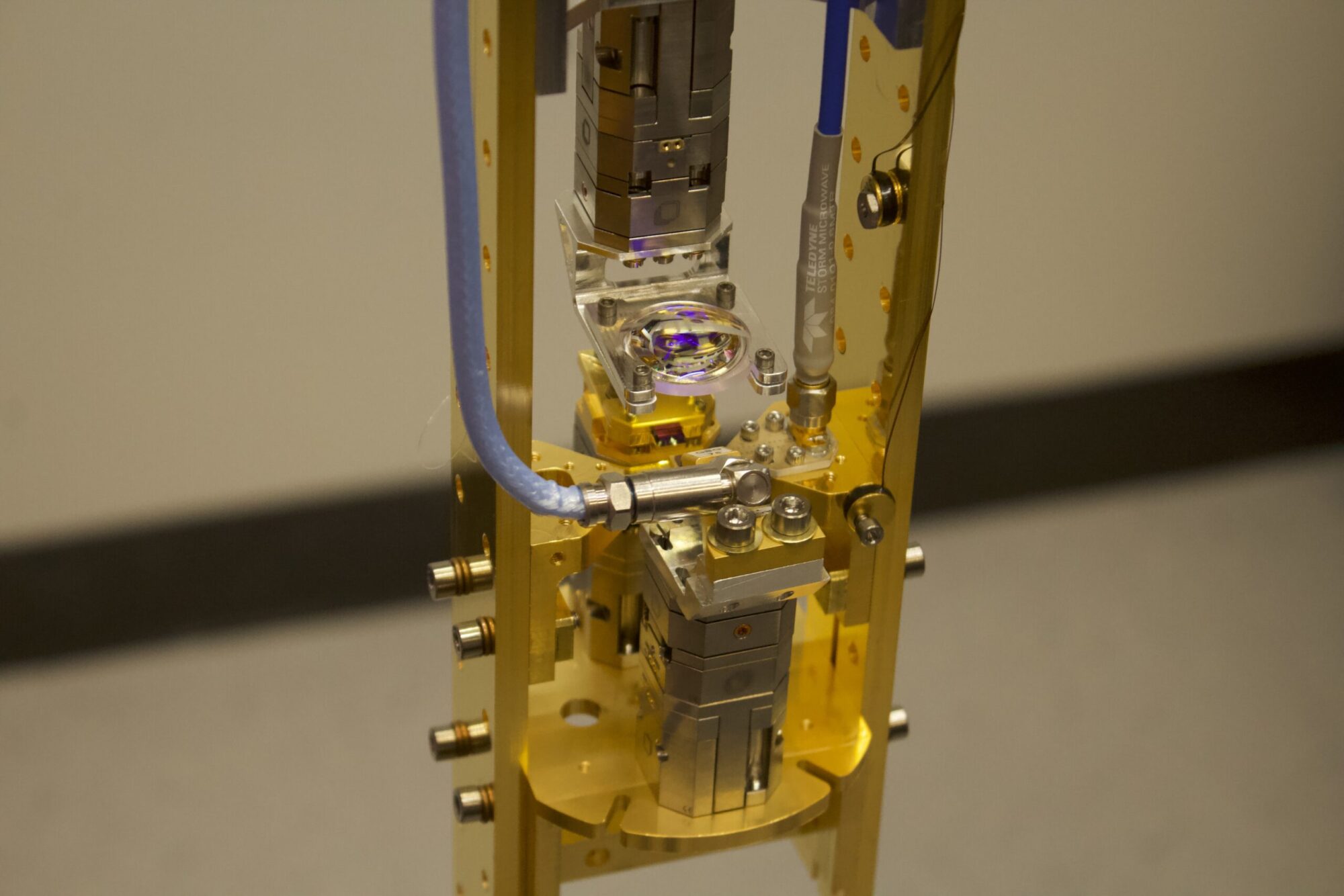

Almost a year ago, Amazon Web Services (AWS) announced that it was partnering with Harvard University to test and develop a quantum network. In late June this year, AWS opened up its labs and let media outlets, including Popular Science, peep at its early models of a quantum repeater, which is similar to a classical amplifier that carry optical signals down long stretches of fiber.
“We’re developing the technology for quantum networks. They are not fully baked,” says Antia Lamas-Linares, head of the AWS Center for Quantum Networking. “There’s a lot of these technologies that have been partially demonstrated in academic labs that still need quite a lot of development to get to what we call a fully fledged quantum network.”
So what’s the point of this kind of technology? A quantum network could be used to distribute cryptographic keys without having to go through an intermediate party, or create anonymous multi-user broadcasts.
The challenges of making a quantum network
In a quantum network, instead of communicating with classical bits that are one or zero, off or on, there are quantum bits, or qubits, that can be in a superposition of one and zero at the same time. Computer scientists can entangle these qubits and take advantage of their quantum properties to carry out interesting computations that would be hard, resource-intensive, or impossible to do classically.

But similar to classical systems, in order to have a network, the team needs to be able to generate the qubits, move them around, and store them. And a really great way to move them around is with photons, or pieces of light, explains Nicholas Mondrik, quantum research scientist at AWS. They travel well, and “you can, with a little bit of cleverness, encode your qubit in a photon,” he says.
[Related: Chicago now has a 124-mile quantum network. This is what it’s for.]
Light is already used in classical fiber optics systems to carry information over long distances. The problem with this method is that after about 62 miles, things start to get choppy. That’s where optical amplifiers come into play. They can detect when light gets weaker, and boosts it up before sending it down the line. However, the optical amplifier and other devices used to pass down the light signal forces that light to make a choice between one or zero, says Mondrik, and it doing so would destroy the quantum information carried on the photon.

One of the key innovations AWS has been workshopping is a quantum equivalent of a signal amplifier, called a quantum repeater.
Diamonds are a quantum researcher’s best friend
To make a quantum repeater, they first needed to figure out how to make quantum memory—something that can store a qubit. That way, it can catch the incoming photon and allow it to be processed, before sending it on its way. The solution: synthetic, “quantum-grade” diamonds.

“Within the structure of diamonds, sometimes you get defects. Sometimes you get diamonds that are not transparent, that have colors and hues. Those things are called color centers and they are impurities in the diamond,” says Lamas-Linares. “It turns out those impurities behave like an artificial atom, and you can use them to store the state of a photon. These interesting colors are what allows us to interface with light, and store the state of the flying qubit and manipulate that state.”
The way to make the diamond suitable for storing photons is to first create “silicon vacancies.” To do that, researchers take a diamond that’s as pure carbon as possible and bombard the carbon-lattice with silicon atoms. These silicon atoms will knock out a couple of carbons, take their place, and behave as a fixed atom in the diamond lattice that can interact with photonic qubits through electrons.
To guide the photon to the electron on the silicon atom, researchers built nanocavities around the silicon vacancy that essentially acts like a set of mirrors that direct the light to where it needs to go.

For this process to work, the team needs to stop the diamond structure from vibrating; they do this by cooling it down to near absolute zero. The device they use to do this is the same chandelier-like dilution refrigerator-vacuum-thermal shield combination that’s used for superconducting quantum computers. But this infrastructure is notably smaller (about half the size), and tail attachment is completely different.
“This is where the silicon vacancy, where this diamond memory lives,” Mondrik says. “In order to make silicon vacancies work as a quantum memory, as a qubit, you need to put them in a strong tunable magnetic field.” Therefore, there are additional structures on the bottom of the chandelier that allows for a superconducting magnet to be attached before the thermal shield gets put on outside.
There’s also a piezoelectric stack that helps researchers steer things around, a microwave line that helps them manipulate the qubit, an optical fiber that transfers light into the diamond cavity, and a microscope imaging system that extends from the bottom of the chandelier to the top to let researchers see what they’re doing.
But not all the science is done in the dilution refrigerator. There are also room temperature workspaces stationed around the lab where qubits get made, measured, and characterized.

In its current form, the contraption where all the different components come together seems like a complicated assembly of wires, metals, and lenses. But eventually, the team wants to compress this technology into one singular, adaptable piece of hardware that they can drag and drop onto any type of quantum computing device.
